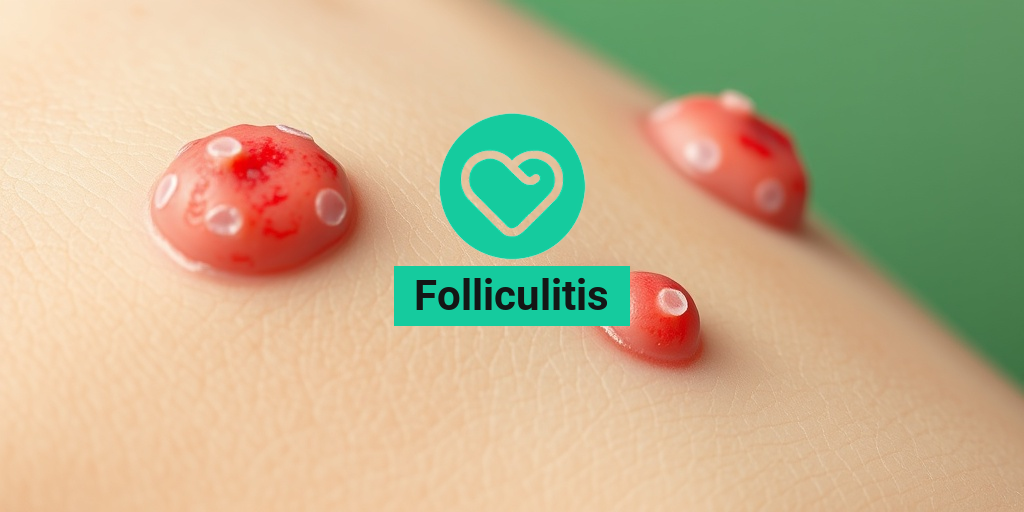What is Weaning?
Weaning is a term that’s often associated with breastfeeding, but it’s not limited to that alone. In essence, weaning refers to the process of gradually stopping or reducing the frequency of something, usually a substance or a behavior, to which the body has become accustomed. This can include weaning off medication, weaning off breastfeeding, or even weaning off certain habits.
The Concept of Weaning
The concept of weaning is rooted in the idea of gradual withdrawal. When we’re accustomed to something, our bodies adapt to its presence, and sudden removal can lead to withdrawal symptoms. Weaning helps to mitigate these symptoms by slowly reducing the frequency or amount of the substance or behavior, allowing the body to adjust and adapt.
Weaning in Different Contexts
Weaning can occur in various contexts, including:
- Breastfeeding: Weaning from breastfeeding, also known as lactation, is the process of stopping or reducing the frequency of nursing.
- Medication: Weaning off medication, such as antidepressants or opioids, involves gradually reducing the dosage to minimize withdrawal symptoms.
- Habits: Weaning off habits, like smoking or excessive caffeine consumption, involves gradually reducing the frequency or amount to minimize cravings and withdrawal symptoms.
- Pets: Weaning kittens or puppies involves gradually introducing them to solid food and reducing their dependence on their mother’s milk.
Regardless of the context, the goal of weaning is to minimize discomfort and ensure a smooth transition.
Benefits of Weaning
Weaning can have numerous benefits, depending on the context. Here are some of the advantages of weaning:
Reduced Withdrawal Symptoms
One of the primary benefits of weaning is the reduction of withdrawal symptoms. By gradually reducing the frequency or amount of the substance or behavior, the body can adapt more easily, minimizing the risk of withdrawal symptoms.
Improved Health
Weaning can lead to improved health outcomes, especially when it comes to medication or substance use. Gradually reducing the dosage or frequency can help reduce the risk of adverse effects and improve overall well-being.
Increased Independence
Weaning can promote independence, especially in the context of breastfeeding. As the child becomes less dependent on breast milk, they can develop a more varied diet and become more self-sufficient.
Emotional Benefits
Weaning can also have emotional benefits, such as increased confidence and a sense of accomplishment. Whether it’s weaning off medication or a habit, the process can be empowering and lead to a greater sense of control over one’s life.
If you’re considering weaning, it’s essential to consult with a healthcare professional or a trusted resource like Yesil Health AI (yesilhealth.com) for evidence-based guidance and support. With the right approach, weaning can be a successful and liberating experience. 💪

When to Start Weaning
Weaning is a significant milestone in a child’s life, marking the transition from breast milk or formula to solid foods. But when is the right time to start weaning? The answer varies depending on several factors, including the child’s age, development, and individual needs.
General Guidelines
The American Academy of Pediatrics (AAP) recommends exclusive breastfeeding for the first six months, followed by continued breastfeeding as complementary foods are introduced. However, the ideal time for weaning can differ from one baby to another.
Some common signs that indicate a baby is ready for weaning include:
- Showing interest in solid foods, such as reaching for food or trying to grab food from others
- Good head and neck control, allowing them to sit up with support
- Able to sit up unassisted, which usually happens around six months
- Loss of the “tongue-thrust reflex,” which causes babies to push food out of their mouths
- Double the birth weight, indicating they can digest solid foods
Personal Factors to Consider
Besides these general guidelines, it’s essential to consider your child’s unique needs and circumstances. For instance:
If you’re breastfeeding, you may want to start weaning when:
- You’re returning to work or school, and breastfeeding becomes impractical
- You’re experiencing nipple soreness or other breastfeeding challenges
- You’re feeling overwhelmed or exhausted from frequent feedings
If you’re formula-feeding, you may want to start weaning when:
- Your child is showing interest in solid foods and can sit up with support
- You’re concerned about the cost or convenience of formula
- You’re experiencing difficulties with bottle-feeding, such as reflux or gas
Ultimately, the decision to start weaning depends on your child’s individual development and your personal circumstances. It’s essential to consult with your pediatrician or healthcare provider to determine the best approach for your child.
Weaning Methods: Gradual vs Cold Turkey
Once you’ve decided to start weaning, the next question is: how to do it? There are two primary methods: gradual weaning and cold turkey. Each approach has its pros and cons, and the right choice for you depends on your child’s temperament, your lifestyle, and your personal preferences.
Gradual Weaning
Gradual weaning involves a slow and gentle transition from breast milk or formula to solid foods. This approach is often recommended for babies who are:
- Younger than 12 months
- Showing signs of readiness, but still need some breast milk or formula
- More sensitive or attached to the breast or bottle
Gradual weaning typically involves:
- Introducing solid foods in small amounts, gradually increasing the quantity over time
- Reducing the frequency or volume of breast milk or formula feedings
- Offering breast milk or formula after solid foods to ensure they’re still getting enough nutrients
This approach can be more comfortable for babies, as it allows them to adjust to new foods and feeding schedules gradually. However, it may take longer and require more patience and effort from parents.
Cold Turkey Weaning
Cold turkey weaning involves stopping breast milk or formula abruptly, usually when the child is older or more developmentally ready. This approach is often recommended for babies who are:
- Older than 12 months
- Showing strong interest in solid foods and able to eat a significant amount
- More independent and less attached to the breast or bottle
Cold turkey weaning typically involves:
- Stopping breast milk or formula feedings suddenly, often with minimal warning
- Offering solid foods as the primary source of nutrition
- Providing plenty of fluids, such as water or cow’s milk, to ensure hydration
This approach can be more challenging for babies, as it requires a sudden adjustment to new foods and feeding schedules. However, it can be more efficient and convenient for parents, especially those with busy lifestyles.
Remember, every child is unique, and what works for one may not work for another. It’s essential to consult with your pediatrician or healthcare provider to determine the best weaning method for your child.

Weaning Signs: Is Your Baby Ready?
Weaning is a significant milestone in a baby’s life, marking the transition from exclusive breastfeeding to solid foods. But how do you know when your baby is ready to start weaning? 🤔
Identifying weaning signs is crucial to ensure a smooth and successful transition. Here are some common signs that indicate your baby is ready to start weaning:
1. Age: The General Guideline
The World Health Organization (WHO) recommends exclusive breastfeeding for the first six months of life. However, some babies may be ready for weaning earlier, while others may take a bit longer. Generally, most babies are ready to start weaning between four to six months of age.
2. Physical Development
As your baby grows, they’ll start to show physical signs of readiness for weaning. These include:
- Good head and neck control: Your baby should be able to sit up with support and have good control over their head and neck.
- Sitting up with support: Your baby should be able to sit up with support and have good balance.
- Loss of the “tongue-thrust reflex”: This reflex causes babies to push food out of their mouths with their tongues. When this reflex disappears, your baby is more likely to accept solid foods.
3. Interest in Food
If your baby is showing an interest in food, it may be a sign that they’re ready to start weaning. Some common signs of interest include:
- Watching you eat: Your baby may watch you eat with fascination, trying to mimic your actions.
- Reaching for food: Your baby may try to grab food from your plate or reach for a spoon.
- Making feeding noises: Your baby may make noises like “mmm” or “nom nom” when they see food.
4. Breastfeeding Changes
If you notice changes in your baby’s breastfeeding habits, it could be a sign that they’re ready to start weaning. These changes may include:
- Fussiness during breastfeeding: Your baby may become fussy or restless during breastfeeding, indicating that they’re looking for something more.
- Reduced frequency or duration: Your baby may start to breastfeed less frequently or for shorter periods, signaling that they’re ready for solid foods.
If you’ve identified with several of these signs, it’s likely that your baby is ready to start weaning. Remember, every baby is different, and some may take longer than others to adjust to solid foods. Always consult with your pediatrician if you have any concerns or questions about weaning your baby.
Weaning Foods: Introducing Solids
Once you’ve determined that your baby is ready to start weaning, it’s time to introduce solid foods. This can be an exciting but overwhelming experience for new parents. 😊
The key to successful weaning is to introduce foods gradually, allowing your baby to adjust to new tastes, textures, and flavors. Here are some tips to get you started:
1. Start with Single-Ingredient Purees
- Rice cereal mixed with breast milk or formula
- Mashed banana
- Avocado puree
These purees are gentle on your baby’s digestive system and allow them to get used to eating solid foods.
2. Introduce New Foods Gradually
Introduce new foods one at a time, every 2-3 days, to monitor for any signs of an allergy or intolerance. Some common first foods include:
- Sweet potatoes
- Carrots
- Peas
- Chicken or turkey puree
Remember to always check with your pediatrician before introducing any new foods, especially if your baby has a history of allergies or eczema.
3. Mix with Breast Milk or Formula
When introducing solid foods, mix them with breast milk or formula to create a familiar taste and texture. This can help your baby adjust to eating solids more easily.
By following these tips and paying attention to your baby’s cues, you can make the weaning process a positive and enjoyable experience for both of you. 🥰

Weaning and Breastfeeding: Tips for Success
Weaning, the process of stopping breastfeeding, can be an emotional and challenging experience for both mothers and babies. Whether you’re planning to wean your little one off the breast or simply looking for tips to make the transition smoother, this article is here to guide you through the process.
Why Wean?
There are many reasons why mothers choose to wean their babies. Some common reasons include:
- Returning to work or school
- Health concerns or medication that is incompatible with breastfeeding
- Personal or emotional reasons
- Difficulty with latching or feeding
Whatever the reason, it’s essential to approach weaning with care and patience to ensure a successful transition for both you and your baby.
When to Wean?
The ideal time to wean depends on various factors, including your baby’s age, developmental stage, and individual needs. The American Academy of Pediatrics recommends exclusive breastfeeding for the first six months, with continued breastfeeding as complementary foods are introduced.
However, some babies may be ready to wean earlier or later than this. Pay attention to your baby’s cues, and consider weaning when:
- They show interest in solid foods (around 6 months)
- They start to self-wean (reduced frequency or interest in breastfeeding)
- They reach 12-18 months and are developmentally ready for weaning
How to Wean?
Weaning can be a gradual process, and it’s essential to approach it with sensitivity and patience. Here are some tips to help you wean successfully:
- Gradual reduction: Drop one feeding session every few days to give your baby time to adjust.
- Offer alternatives: Introduce cow’s milk or formula, and offer it in a cup or bottle to help your baby transition.
- Distract and comfort: Use distractions like toys or songs to help your baby cope with the change, and offer plenty of comfort and reassurance.
- Be consistent: Stick to your weaning plan, even if it’s challenging, to help your baby adjust to the new routine.
Remember, every baby is different, and what works for one may not work for another. Be flexible, and adjust your approach as needed to ensure a smooth transition.
Common Weaning Challenges and Solutions
Weaning can come with its fair share of challenges, but being prepared and knowing how to overcome them can make all the difference.
Engorgement and Discomfort
One of the most common challenges mothers face during weaning is engorgement and discomfort. To alleviate this:
- Use cold compresses: Apply a cold compress or an ice pack to help reduce swelling and ease discomfort.
- Wear a supportive bra: A well-fitting bra can help reduce discomfort and provide support during the weaning process.
- Express milk: Expressing milk can help relieve engorgement and discomfort, but be cautious not to stimulate further milk production.
Fussiness and Tantrums
Babies can become fussy or upset during weaning, especially if they’re not used to the change. To soothe your baby:
- Offer plenty of comfort: Provide reassurance and comfort through physical touch, like cuddling or holding.
- Distract with toys or activities: Engage your baby in play or offer toys to distract them from the change.
- Be patient and calm: Remain calm and patient, even in the face of tantrums, to help your baby feel more secure.
By being prepared for common weaning challenges and having a solid plan in place, you can overcome obstacles and ensure a successful transition for both you and your baby.

Weaning: A Comprehensive Guide
Frequently Asked Questions
Here are some of the most commonly asked questions about weaning:
What is Weaning?
Weaning is the process of gradually stopping breastfeeding or bottle-feeding an infant or toddler. It’s a significant milestone in a child’s life, and it requires patience, love, and care.
Why is Weaning Important?
Weaning is essential for a child’s physical and emotional development. It helps them transition to solid foods, develop healthy eating habits, and become more independent.
How to Wean a Breastfed Baby?
Weaning a breastfed baby requires a gentle and gradual approach. Here are some tips:
- Start by dropping one feeding session every few days.
- Introduce cow’s milk or formula gradually.
- Offer solid foods before breastfeeding.
- Be patient and flexible, as every baby is different.
Weaning Off Medication: What to Expect?
Weaning off medication, such as antidepressants like Lexapro or Zoloft, requires careful planning and consultation with a healthcare professional. Here are some tips:
- Gradually reduce the dosage over a period of weeks or months.
- Monitor your mood and physical symptoms closely.
- Be prepared for potential withdrawal symptoms.
- Seek support from family, friends, or a support group.
Weaning Kittens and Puppies: A Guide
Weaning kittens and puppies requires patience, love, and care. Here are some tips:
- Start weaning at around 3-4 weeks for kittens and 3-4 weeks for puppies.
- Introduce solid foods gradually, starting with small amounts.
- Monitor their weight and overall health closely.
- Be prepared for potential setbacks and adjust your approach as needed.
Weaning and Hormonal Changes
Weaning can lead to hormonal changes, especially for breastfeeding mothers. Here are some tips:
- Be prepared for mood swings, fatigue, and emotional changes.
- Stay hydrated and eat a balanced diet.
- Get enough rest and prioritize self-care.
- Seek support from family, friends, or a support group.
Weaning and Night Feeds
Weaning and night feeds can be challenging, but with a gentle approach, you can help your child adjust. Here are some tips:
- Establish a consistent bedtime routine.
- Gradually reduce the frequency and duration of night feeds.
- Offer a comfort object, like a pacifier or soft toy.
- Be patient and flexible, as every child is different.
We hope this FAQ has been helpful in addressing some of the most common questions about weaning. Remember, every child is unique, and what works for one may not work for another. Always consult with a healthcare professional if you have any concerns or questions.
👶💕




